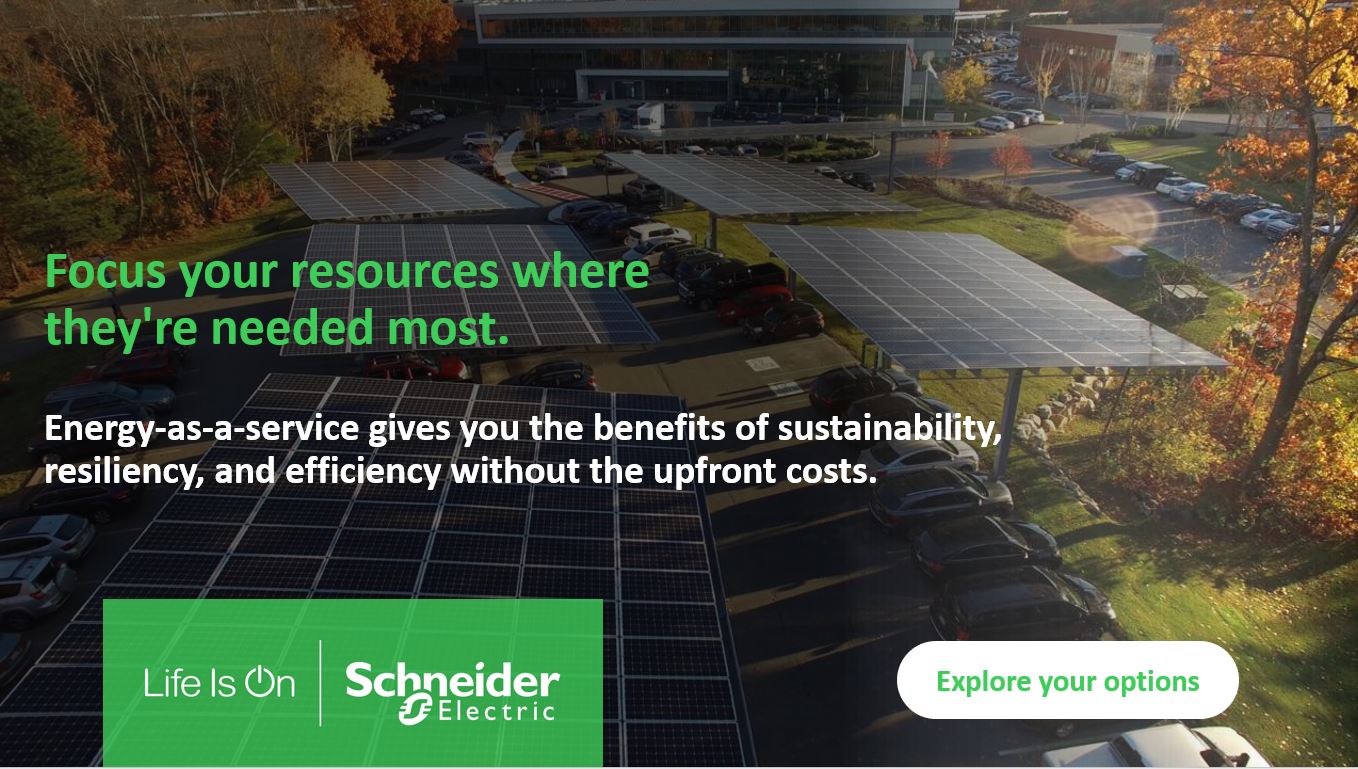Healthcare facilities across the country are experiencing a unique and unexpected financial strain from the COVID-19 pandemic. These efforts include expanding general and intensive care unit bed capacity, upgrading ventilation systems, delaying elective procedures, and creating separate testing areas.
At the same time, the number of power outages in the U.S. is expected to rise in the coming years due to many factors, including an increase in severe weather and an aging grid. We recently saw 2.5 million power outages from Tropical Storm Isaias. Because healthcare facilities depend on electricity for everything from operating the parking lot lights to critical systems and medical equipment, a long-term outage can have severe impacts for patients and staff.
Considering both the impending storm season and the stress on facilities from the pandemic, hospitals may want to consider additional measures to ensure energy efficiency and resiliency. Microgrids and energy as a service are solutions that can fill these needs.
Keeping the electricity flowing when the grid goes down
Hospitals are required to have an emergency power supply (EPS) that automatically switches on during an electric utility outage to keep these essential devices running. Most often, an EPS includes natural gas or diesel generators. For example, when PG&E proactively shut off all electrical utility services in California in response to wildfires, hundreds of hospitals used generators to maintain critical operations.
 Unfortunately, recent hurricanes, grid disruption, and forced outages also bring attention to the relatively small emergency fuel supply required for hospitals. Currently, the NFPA 110 standard mandates that hospitals maintain around 72 – 96 hours of fuel supply depending on the facility’s size and geographic location. This simply isn’t enough to support a facility during a prolonged outage.
Unfortunately, recent hurricanes, grid disruption, and forced outages also bring attention to the relatively small emergency fuel supply required for hospitals. Currently, the NFPA 110 standard mandates that hospitals maintain around 72 – 96 hours of fuel supply depending on the facility’s size and geographic location. This simply isn’t enough to support a facility during a prolonged outage.
Likewise, some EPS systems cannot handle the discretionary energy loads needed during a long-term outage, and facilities are left in the dark.
Microgrids are a viable solution that keeps a facility up and running, even when the emergency fuel supply runs out.
Microgrids offer energy savings and resilience
Microgrids work by generating energy through distributed energy resources (DERs) such as renewables and combined heat and power (CHP) systems. The energy generated is consumed by the load and excess energy is either sold to the grid or stored in batteries.
A microgrid can also function as an island by disconnecting from the grid and distributing power locally. Islanding effectively keeps the energy flowing to a facility when the grid goes down, whether it’s for 30 minutes or 30 days.
At a time when healthcare facilities are facing financial pressures due to COVID-19, microgrids enable a facility to automatically choose the lowest-cost fuel source, thereby helping them save on their energy bill. For example, a hospital may decide to go island when consuming energy from the grid isn’t cost-effective, such as during peak demand times.
Accessible energy with zero capital expenditure
Although purchasing a microgrid may appeal to healthcare facilities, many CFOs and facility managers worry about the upfront and ongoing costs. However, new business models such as energy as a service (EaaS) take the burden of financing, installing, and operating the energy system away from the hospital.
AlphaStruxure™, a company offering EaaS solutions, provides commercial and industrial companies access to renewable energy microgrids through a performance-based energy service agreement. This gives facilities, like hospitals, reliable power, and a predictable monthly payment with zero capital expenditure.
Smart, local, efficient energy for healthcare facilities
In a nutshell, microgrids ensure smartly procured, locally generated, and efficiently consumed energy — they’re an ideal solution for healthcare facilities looking to keep the power on and save energy costs during uncertain times.
Are you interested in learning about how healthcare facilities can adapt to changing demands through microgrids and other energy infrastructure? If so, check out our latest on-demand webinar: “Microgrids — The Future of Energy.”



